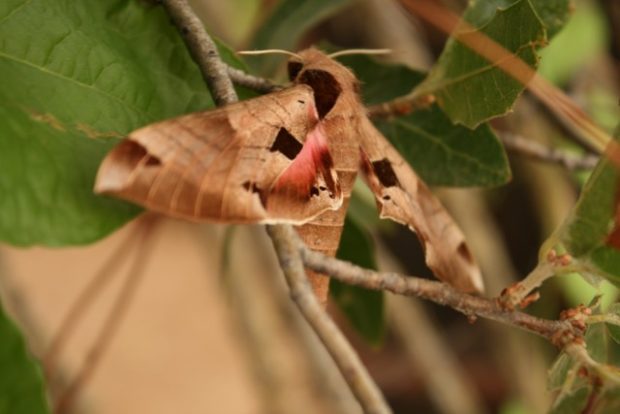
Eumorpha typhon or the typhon sphinx moth is out and about gathering nectar and sharing pollen from June to August in the borderlands. I realized very quickly that we had everything the nectar loving adults need at our little homestead. Our planted Agave palmeri may not bloom until sometime over the next several years, but no worries, as we have an abundance of Datura wrightii that bloom every year all summer long. So those are the for the adults. And years ago I planted several canyon grapes (Vitis arizonica) and it turns out that it is the larval food of these hawk moths. Yay!
The scientific name Eumorpha is a combination of two Greek words and means beautiful form. The specific epithet typhon is also from the Greek for whirlwind or it could be a reference to Typhon, the father of monsters in Greek mythology. I like whirlwind…yeah, that makes more sense. And listen, as near as I can figure the common names of sphinx moth and hawk moth are synonymous. And when I was a little boy in Kentucky I chased diurnal moths called the hummingbird moth. They too, are in the family, Sphingidae, with hawk moths. Cool!

The photos are mine. That’s Buster inspecting the dried up specimen I found in our barn. The live moth is climbing in an oak at our place Below I’ve included a link to a nice description of hawk moths and Eumorpha. I noticed that Stephen Buchmann’s name is misspelled, so here it is correct. I think you may want to find his books.
https://www.fs.fed.us/wildflowers/pollinators/pollinator-of-the-month/hawk_moths.shtml






